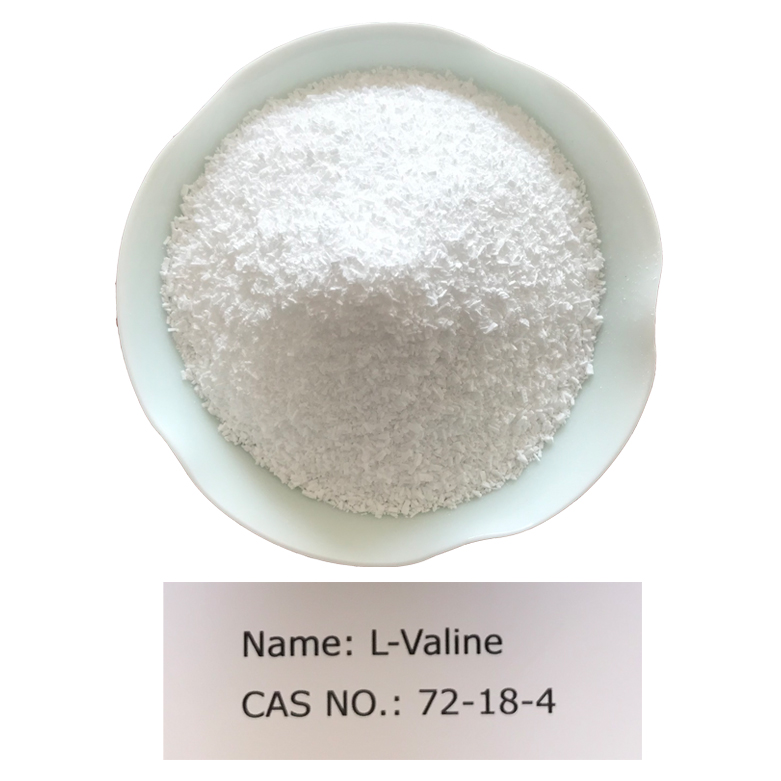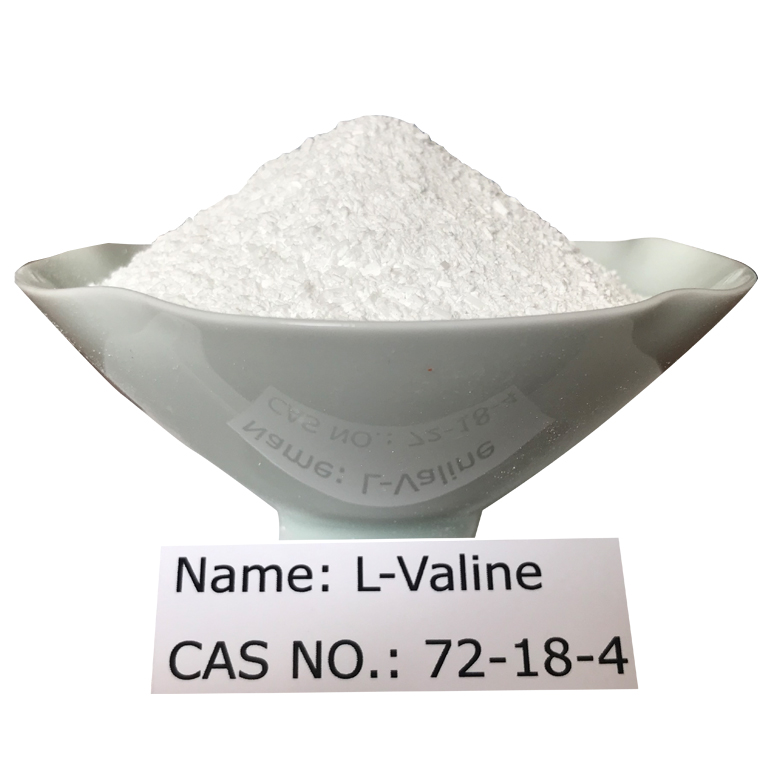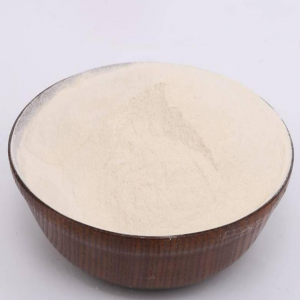L-Valine CAS NO 72-18-4 for Feed Grade
Usage:
L-Valine (Abbreviated Val) is one of the 18 common amino acids, and one of the eight essential amino acids at the human body. It is called branched chain amino acids (BCAA) with L-Leucine and L-Isoleucine together because they all contain a methyl side chain in their molecular structure.
L-Valine is one of aliphatic amino acids among twenty kinds of proteinogenic amino acids and a branched-chain amino acid (BCAA) that an animal itself can’t synthesize it and must take in from dietary to meet their nutritional needs; therefore L-valine is an essential amino acid. Main effects as following:
(1) Added to lactations’ diets increasing milk yield. The mechanism is that L-Valine can affect the generation of alanine and release of muscles, and the new gained alanine in lactations’ plasma right help breast tissue adjust to the demand for raw materials of glucose and thereby milk yield goes up.
(2) Improving animals’ immune function. L-Valine can motivate animal bones T cells to transform into mature T cells. The shortage of valine decreases addiment C3 and transferritin levels, significantly impeding growth of thymus and peripheral lymphoid tissue and causing growth inhibition to acidic and neutral white blood cells. Once lacking valine, chicks will conduct slower and less antibody response against Newcastle disease virus.
(3) Affecting animal endocrine levels. Studies have shown that lactating sows and lactating rats’ diets supplemented with L-valine may increase concentrations of prolactin and growth hormone in their plasmas.
(4) L-valine is also essential for purposes of tissue repair and restoration. It is called a branch-chained amino acid or BCAA, which acts along with two additional BCAAs known as L-Leucine and L-Isoleucine.
Specifications
|
Item |
AJI92 |
USP26 |
USP40 |
|
Description |
White crystals or crystalline powder |
— |
— |
|
Identification |
Conform |
— |
Conform |
|
Assay |
99.0%~100.5% |
98.5%~101.5% |
98.5%~101.5% |
|
pH |
5.5~6.5 |
5.5~7.0 |
5.5~7.0 |
|
Transmittance |
≥98.0% |
— |
— |
|
Loss on drying |
≤0.20% |
≤0.3% |
≤0.3% |
|
Residue on ignition |
≤0.10% |
≤0.1% |
≤0.1% |
|
Chloride |
≤0.020% |
≤0.05% |
≤0.05% |
|
Heavy Metals |
≤10ppm |
≤15ppm |
≤15ppm |
|
Iron |
≤10ppm |
≤30ppm |
≤30ppm |
|
Sulfate |
≤0.020% |
≤0.03% |
≤0.03% |
|
Arsenic |
≤1ppm |
— |
— |
|
Ammonium |
≤0.02% |
— |
— |
|
Other amino acids |
Conforms |
— |
— |
|
Pyrogen |
Conforms |
— |
— |
|
Related compounds |
— |
— |
Conforms |
|
Specific Rotation |
+27.6°~ +29.0° |
﹢26.6°~﹢28.8° |
﹢26.6°~﹢28.8° |


















